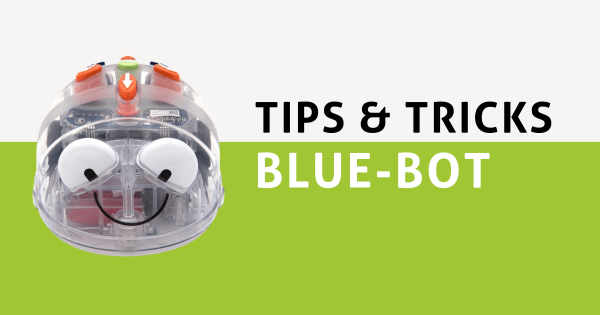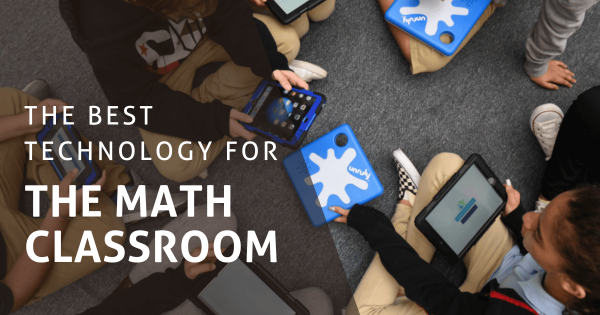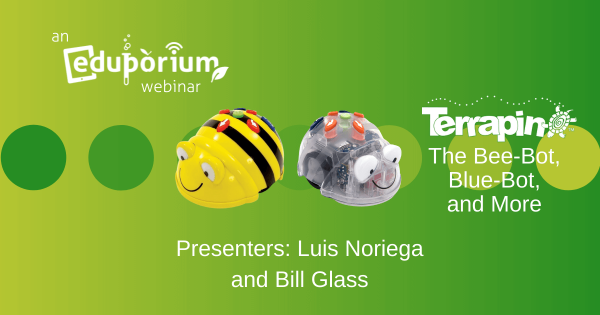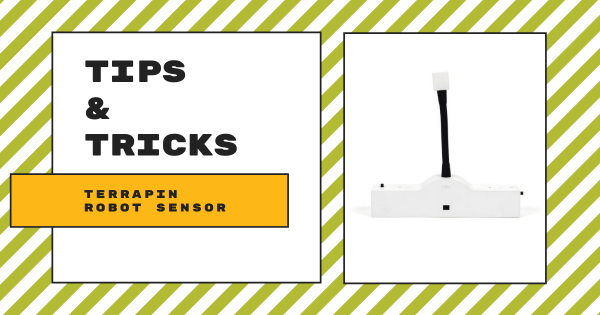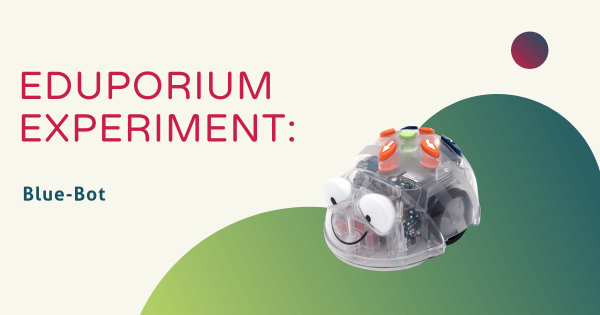Within the Blue–Bot app, there are two different modes: explore mode and challenge mode. Using either mode, kids can access the same directional buttons they’ve used with the Bee–Bot along with a few new features, like 45-degree turns and digital capabilities. Read on to learn how this slightly more advanced early elementary robotics tool can impact STEM learning.
Blue–Bot
The Blue-Bot is a dynamic STEAM tool in revolutionizing early-grade coding instruction, engaging young children in playful and interactive experiences. Specifically designed for early childhood instruction, the Blue-Bot simplifies fundamental CS concepts and it'll foster critical thinking, problem-solving, and spatial reasoning skills. At its core, the Blue-Bot Robot combines all the excitement of robotics with the simplicity of hands-on programming. With an intuitive interface, younger students will easily program the Blue-Bot to navigate mazes, solve puzzles, and complete challenges. With directional buttons or a drag-and-drop programming app, students develop a foundational understanding of sequencing, commands, and algorithms, laying the groundwork for more advanced CS concepts in later grades. And, its colorful and friendly design appeals to the younger kids, stimulating curiosity and exploration.
When kids interact with the Blue-Bot, they develop fine motor skills, spatial awareness, and social-emotional competencies, boosting overall cognitive development. Plus, the Blue-Bot facilitates collaborative learning experiences, encouraging peer interaction and teamwork as students work together to program and problem-solve. Through collaborative play, kids develop communication, cooperation, and empathy skills, fostering a positive and inclusive classroom environment from early on. The Blue-Bot Robot is a powerful classroom tool that empowers teachers to teach kids coding in the early grades effectively. With hands-on experiences, the Blue-Bot ignites passions for coding and technology, setting young learners on a path of lifelong learning. As kids get familiar with a separate device that controls a robot, they'll also take another key step. Using its Bluetooth feature, they'll also boost tech skills.
-
The Best Technology For The Math Classroom
One of the biggest focuses in 21st century education is on teaching coding and computer science. When integrating such efforts into these classroom lessons, however, there are even often plenty of opportunities for including math angles. So, while covering core CS concepts, like logic, variables, or functions, these tools help teachers connect math and coding in fun ways. -
Webinar: Coding With Terrapin's Bee-Bot, Blue-Bot, And Tuff-Bot
Joining us in the broadcast from the Terrapin team were Bill Glass and Luis Noreiga, who led some insightful demos for attendees. If you have thought about using the Bee-Bot, Blue-Bot, or Tuff-Bot in your STEM teaching, we definitely recommend checking out the replay! You can learn all about the Terrapin robots, accessories, and their unique online coding emulators. -
Tips & Tricks | The Terrapin Robot Sensor + Bee-Bot And Blue-Bot
The compact and affordable Terrapin Robot Sensor allows students to add audio feedback and increase interactivity of their Bee–Bot coding activities or Blue–Bot experiments. It’s really easy to use and provides teachers with a great next step as they start expanding robotics for elementary students, bolstering SEL connections, and introducing new types of technology. -
Eduporium Experiment | Blue-Bot And The Blue-Bot App
Designed to closely resemble the tried-and-true Bee–Bot coding robot, the Blue–Bot Robot from Terrapin provides ECE teachers and students with an upgraded learning experience. It’s still simplistic enough for kids to use as part of Pre–K, kindergarten, and early elementary lessons but also features added Bluetooth functionality to ensure for progressive skills development.




